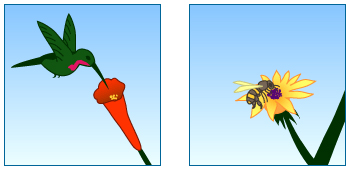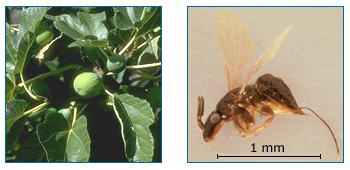Coevolving species often seem to be fitted to each other. This is also true in cooperative systems where organisms have evolved to help each other out. For example, some plants have coevolved with their pollinators. The plants get help reproducing and the pollinators get a nutritional reward like nectar. In this case, the appearance of the flower has evolved to attract specific pollinators and the pollinators have evolved to take advantage of the rewards offered by the plant and to effectively carry their pollen.

Some plants and pollinators fit each other so well that no one else will do. Yucca moths pollinate only yuccas. And any yucca plants grown outside their native habitat and away from the yucca moths must be pollinated by hand because no foreign pollinator “has the right stuff.” Figs and fig wasps are even more specific. In fact, their coevolutionary history has bound them so tightly that they even speciate in sync with one another — there are now 900-plus fig species, each pollinated by one specific wasp!

